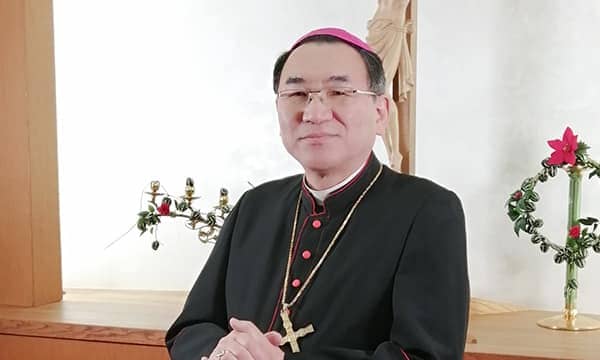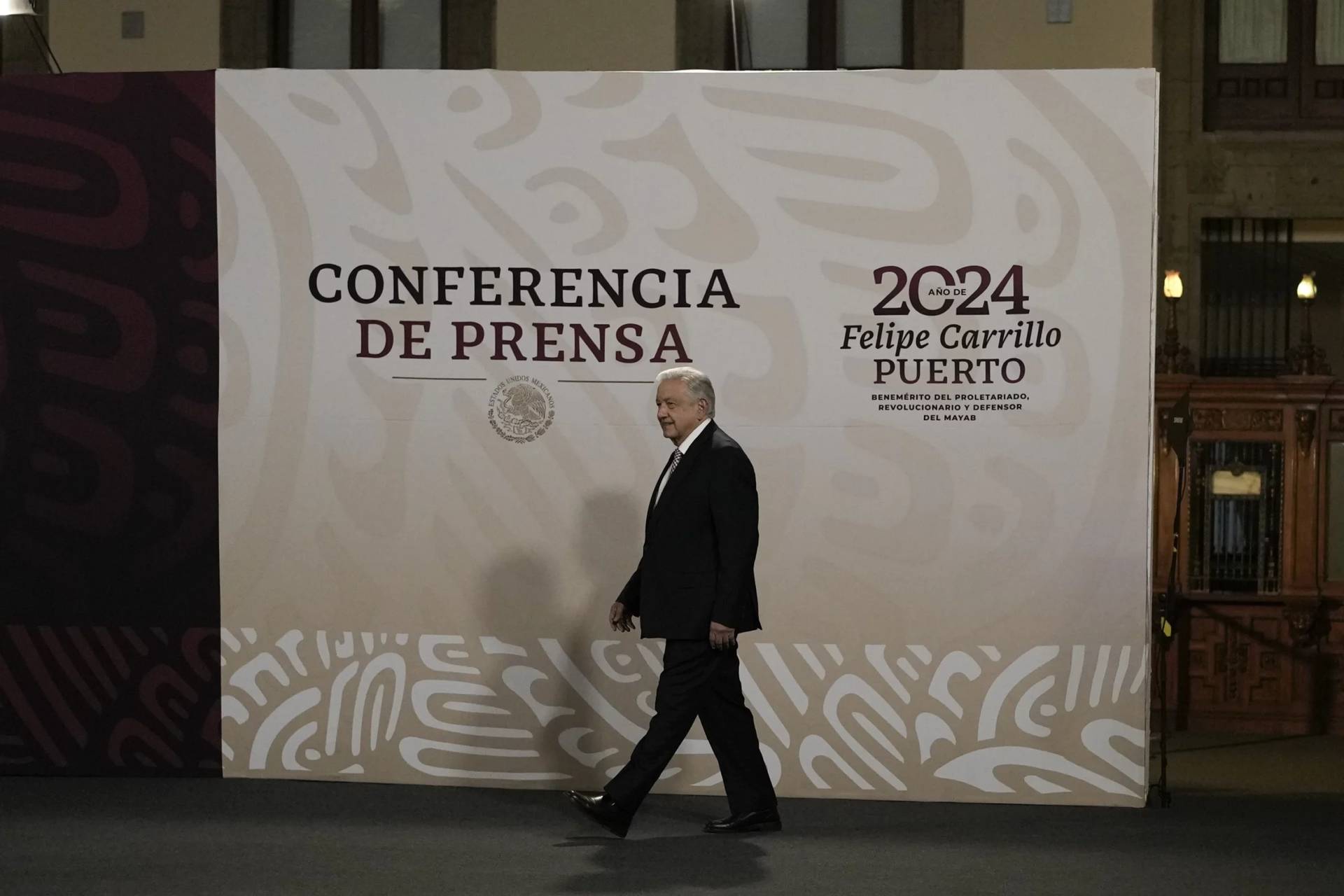ROME — In the Vatican, Sunday’s Feast of the Baptism of the Lord is mostly a warm-and-fuzzy occasion when the pope baptizes the newborn children of employees, giving them a precious family memory and some relaxed face time with the boss.
In other Catholic circles, however, the baptism Mass has become an annual occasion for commenting on Pope Francis’ approach to the liturgy, meaning the public worship of the Church.
That’s because it’s generally one of the few times every year the pope celebrates Mass ad orientem, meaning “to the east,” with his back to the congregation — the preferred stance of liturgical traditionalists because it’s how things were done in the old Latin Mass before the Second Vatican Council (1962-65). The choice is more or less imposed by the design of the Sistine Chapel, where the Mass is held.
(The pope does not celebrate the older version of the Mass for the feast, but the new Mass using the older posture.)
In the court of public opinion, Francis often benefits from comparison with his predecessor, Pope Benedict XVI. Yet among many liturgical experts, it’s the other way around.
Conservative liturgists often complain that Francis is hostile to traditional forms of worship, especially the older Latin Mass, while liberals grouse that Francis has moved too slowly in bringing his reform agenda to bear on liturgical matters.
More basically, the perception often is that while Benedict cared deeply about the liturgy, Francis just doesn’t see it as a priority.
That impression was burnished early on by an urban legend. A rumor made the rounds shortly after Francis was elected that when a Vatican official tried to place a mozzetta on him — a shoulder-length cape of red velvet trimmed with white fur — he said, “You put it on! The carnival is over.”
That the story was bunk didn’t change the fact that many liturgical adepts decided almost from the beginning this wasn’t their pontiff.
In some circles, it also doesn’t help that Francis is a Jesuit, since, fairly or not, Jesuits have a reputation for being a bit casual about worship. An old joke in liturgical circles goes that a Jesuit Mass is like a plane landing when there’s danger of a crash — if you walk away alive, it was a success.
Almost three years into his papacy, here are four observations about Francis and the liturgy.
The Old Mass: To some extent, Francis’ perceived hostility to the older Latin Mass, fueled by accounts of his rocky relationship with traditionalists in Argentina and by his early crackdown on a traditionalist order known as the Franciscan Friars of the Immaculate, probably has been exaggerated.
For his jubilee Year of Mercy, Pope Francis decreed that confessions heard by priests of the Society of St. Pius X, the traditionalist Catholic body for whom preserving the Latin Mass is a signature crusade, will be considered valid. In Argentina, his hand-picked successor in Buenos Aires recently helped the society obtain legal recognition from the state.
On the other hand, Francis is very much a man of the new Mass who believes that the reforms introduced by Vatican II were, and remain, fundamentally healthy.
In March, he celebrated the 50th anniversary of the first Mass offered in Italian, saying, “Let us thank the Lord for what he has done in his Church in these 50 years of liturgical reform … It was truly a courageous gesture for the Church to draw near to the people of God, so that they are able to understand well what they are doing.”
“It is not possible to go backwards,” he said. “Always forward! Those who go backward are mistaken.”
In other words, while Francis does not seem inclined to clamp down on the “extraordinary form” of the Mass installed by Benedict, he’s not passionate about promoting it either — in effect, a sort of “live and let live” solution.
Preaching: One area of liturgical life where Francis certainly can’t be accused of just phoning it in is preaching, since his commitment to delivering a daily homily has created an entirely new source of insight on papal thinking.
He’s the first pope in history to celebrate his daily Mass at the Santa Marta, the Vatican residence where he resides, and to make summaries of his impromptu homilies available through Vatican Radio.
Those daily reflections were collected into a book last year called “Encountering Truth: Meeting God in the Every Day.” An Italian publishing house also released a companion CD with audio of the homilies released by Vatican Radio.
Francis has brought up the need for quality preaching multiple times, usually in venues when he’s addressing priests or seminarians. Last April, for instance, while ordaining 19 new priests, he urged them to keep sermons short and simple.
“Let this be the nourishment of the People of God,” Francis said, “that your sermons are not boring, that your homilies reach people’s hearts because they come from your heart, because what you say to them is what you carry in your heart.”
(For Sunday’s baptism Mass, he took his own advice about keeping it short, delivering an impromptu homily to the gathered parents about passing on the faith that lasted less than three minutes.)
Confession: While discussions of the liturgy often begin and end with the Mass, there are seven sacraments of the Catholic Church, and there’s no doubt about Francis’ passion for one of them in particular: Confession, or more properly, the Sacrament of Reconciliation.
When he made his first parish visit as the Bishop of Rome in 2013, he surprised the pastor by asking if he could hear some confessions while he was there, which was not part of the prepared program.
In March 2014, during a traditional Lenten penitential service in St. Peter’s Basilica, he delivered another surprise: As his Master of Ceremonies was moving him into a confessional to administer the sacrament, he signaled that he first wanted to confess himself. He knelt in front of another priest, who heard his confession and gave him absolution.
In a new interview book about his Jubilee Year of Mercy, an entire chapter is devoted to Francis reflecting on “the gift of confession,” describing the sacrament as “very beautiful.” (He also says he especially likes hearing confessions from children, because “they are not abstract; they say what really happened.”)
Popular Devotion: Officially speaking, popular devotions such as the rosary or novenas are not part of Catholic liturgy. They’re sometimes seen with suspicion by purists who regard them as, at best, a distraction, and at worst an embarrassment.
Vatican II, however, taught that liturgy and popular devotion should be in “mutual and fruitful relationship with each other,” and Francis has certainly taken that injunction to heart.
Based on his Latin American background, he knows the importance of devotions such as Marian festivals, Stations of the Cross processions, and pilgrimages in sustaining the faith of ordinary believers, especially the poor.
In his 2013 document Evangelii Gaudium, seen as the magna carta of his papacy, Francis wrote:
I think of the steadfast faith for those mothers tending their sick children who, though perhaps barely familiar with the articles of the creed, cling to a rosary; or of all the hope poured into a candle lighted in a humble home with prayer for help from Mary, or in the gaze of tender love directed to Christ crucified.
Attachment to Mary is also a cornerstone of the pontiff’s personal spirituality. (In March 2015, Time magazine called him “obsessed” with her.)
It’s customary that before and after every foreign trip, he heads across Rome to the Basilica of St. Mary Major, the largest Christian church in the world dedicated to Mary, to pray before an image of the Madonna as Salus Populi Romani, “protector of the Roman people.” In Argentina, he promoted devotion to another image of Mary as “Untier of Knots” that he encountered while studying in Germany.
Such acts may be only “para-liturgical,” but it’s clear that when Francis thinks about the spiritual life, they’re key to what he has in mind.
















